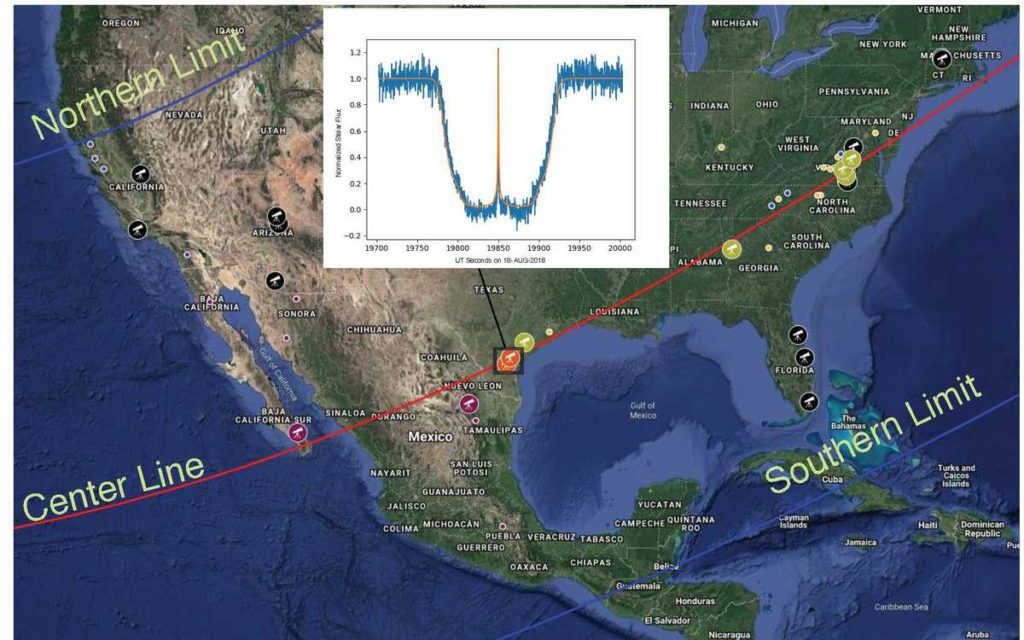Pluto’s tenuous atmosphere is thin that expands when it comes closer to the Sun and collapses as it moves farther away. It is mainly composed of nitrogen.
Pluto orbits the Sun in 248 Earth years. Its distance varies from its closest point, about 30 astronomical units from the Sun to 50 AU from the Sun.
Since the past century, Pluto has been receiving less and less sunlight as it moves farther away from the Sun. In 2018, it was found that the surface pressure and atmospheric density of Pluto continued to increase.
This phenomenon has been since attributed as thermal inertia.
When pluto passed in front of a star, a Southwest Research Institute-led team of astronomers had deployed telescopes at numerous sites in the U.S. and Mexico. They pointed the telescopes to observe Pluto’s atmosphere as the well-placed star briefly backlighted it.

Using this occultation event, the team measured the abundance of Pluto’s tenuous atmosphere. They found compelling evidence that pluto’s atmosphere is beginning to disappear, refreezing back onto its surface as it moves farther away from the Sun.
During this occultation event, which lasted for 2 minutes, the star faded from view as Pluto’s atmosphere and solid body passed in front of it. The rate at which the star disappeared and reappeared determined the density profile of Pluto’s atmosphere.
Several telescopes deployed near the middle of the shadow’s path observed a phenomenon called a ‘central flash.’ This phenomenon occurs because of the refraction of light from pluto’s atmosphere into a region at the very center of the shadow.
Dr. Eliot Young, a senior program manager in SwRI’s Space Science and Engineering Division, said, “The central flash seen in 2018 was by far the strongest that anyone has ever seen in a Pluto occultation. The central flash gives us very accurate knowledge of Pluto’s shadow path on the Earth.”
SwRI Staff Scientist Dr. Leslie Young said, “An analogy to this is the way the Sun heats sand on a beach. Sunlight is most intense at high noon, but the sand then continues soaking up the heat throughout the afternoon, so it is hottest in the late afternoon. The continued persistence of Pluto’s atmosphere suggests that nitrogen ice reservoirs on Pluto’s surface were kept warm by stored heat under the surface. The new data suggests they are starting to cool.”
The findings have been shared at the American Astronomical Society Division for Planetary Sciences Annual Meeting.
